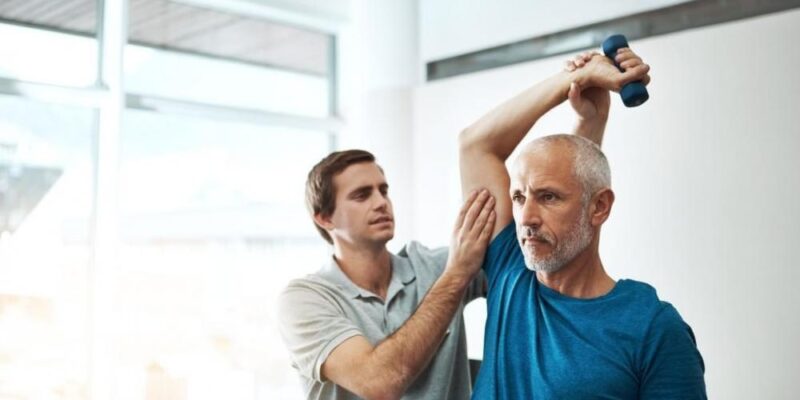Experiencing a stroke can be a life-altering event. But what if there’s a route to reclaiming your strength and mobility? That’s where physiotherapy comes into play. But how you might ask? Well, let’s explore its indispensable role in stroke recovery.
Understanding Stroke and Rehabilitation
Before diving in, let’s set the stage. A stroke occurs when the blood supply to the brain gets interrupted, causing cells to die. Consequently, the body functions controlled by the affected area suffer. So, physical rehabilitation post-stroke is paramount. Why? Because it aids in regaining lost skills and leading an independent life.
The Power of Physiotherapy
So, where does physiotherapy fit into the stroke recovery picture? Its critical role is multifaceted, enhancing physical strength, improving coordination, increasing flexibility, and promoting mobility.
Exercise Therapy: Building Strength
In the wake of a stroke, strength loss, particularly on one side of the body, can be a common outcome. It’s a challenging hurdle to overcome. That’s where exercise therapy comes into play. It forms a core part of physiotherapy and focuses on targeted, controlled exercises to help rebuild strength.
A tailored exercise regimen devised by a physiotherapist aids in tackling muscle weakness and combatting fatigue. By incrementally increasing the intensity and duration of the exercises, patients can gradually reclaim their muscle strength, making daily tasks more manageable. Imagine the renewed confidence that comes with regaining strength; wouldn’t that be a significant victory?
Coordination: Restoring Balance
Another essential role physiotherapy plays is in the realm of coordination, particularly post-stroke. People who have experienced a stroke often grapple with coordination and balance issues. Musculoskeletal therapy, a core technique in physiotherapy, offers a solution.
This therapy encompasses movements and exercises that specifically target joints and muscles. It not only aids in improving physical coordination but also helps stroke survivors regain control over their movements. Additionally, it contributes to reducing the risk of injury from falls, a common concern for those recovering from a stroke.
Imagine the sheer joy of walking independently and confidently again; wouldn’t that be fantastic?
Flexibility: Easing Movement
Physiotherapy’s power doesn’t stop at strength and coordination; it extends further into flexibility. After a stroke, joint stiffness and spasticity can pose significant challenges, impeding movement. Physiotherapists utilise stretching exercises and techniques to increase flexibility, making movements smoother and less painful. Imagine regaining the ability to perform your favourite activities efficiently; wouldn’t that be wonderful?
Mobility: Regaining Independence
One of the ultimate goals of physiotherapy in stroke rehabilitation is to enhance mobility, fostering independence in stroke survivors. Through gait training and mobility exercises, physiotherapists aid patients in regaining their ability to walk and move about freely. It’s about restoring freedom and self-sufficiency, crucial factors for quality of life.
Journey to Recovery
Recovery from a stroke isn’t a quick process; it requires patience and perseverance. Yet, with the comprehensive approach of physiotherapy — encompassing strength-building, coordination, flexibility, and mobility — the journey becomes less daunting. It offers a beacon of hope to those determined to reclaim their lives post-stroke. But remember, the key to successful recovery is consistent effort and determination.
Isn’t it remarkable to see how physiotherapy, with all its facets, can pave the way for stroke rehabilitation. Its importance cannot be overstated — it’s not just beneficial; it’s essential. It’s a testament to the transformative power of targeted physical rehabilitation in stroke recovery.
Conclusion
In conclusion, physiotherapy serves as a cornerstone in the complex architecture of stroke rehabilitation. Whether you’re a stroke survivor or know someone who is, never underestimate the value of this recovery strategy. After all, who wouldn’t want to seize the chance of regaining independence and improving quality of life?



Comments